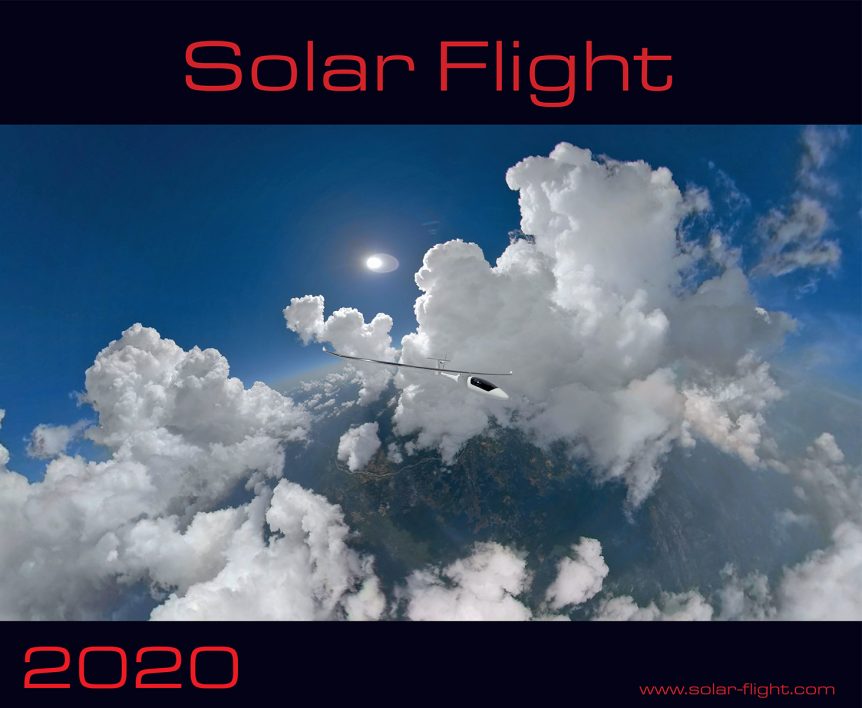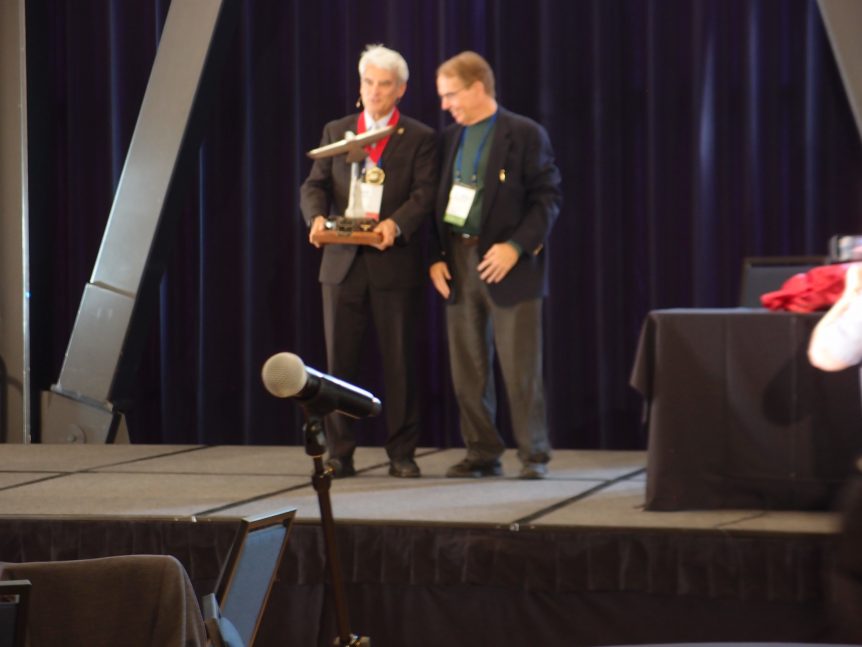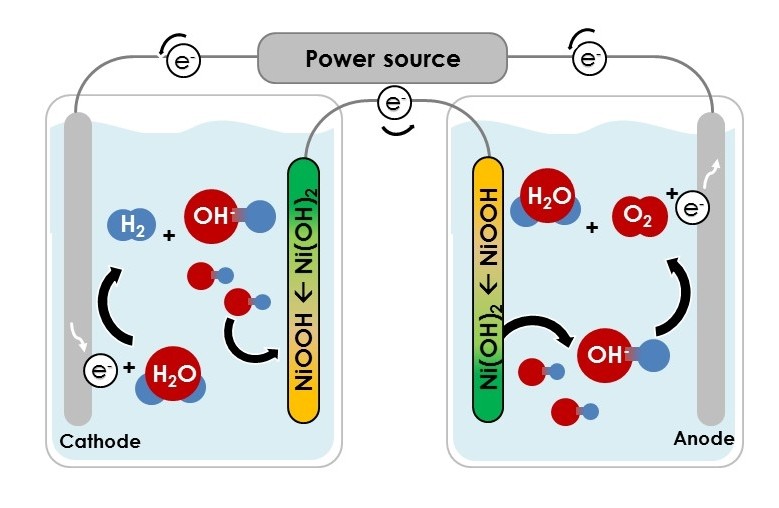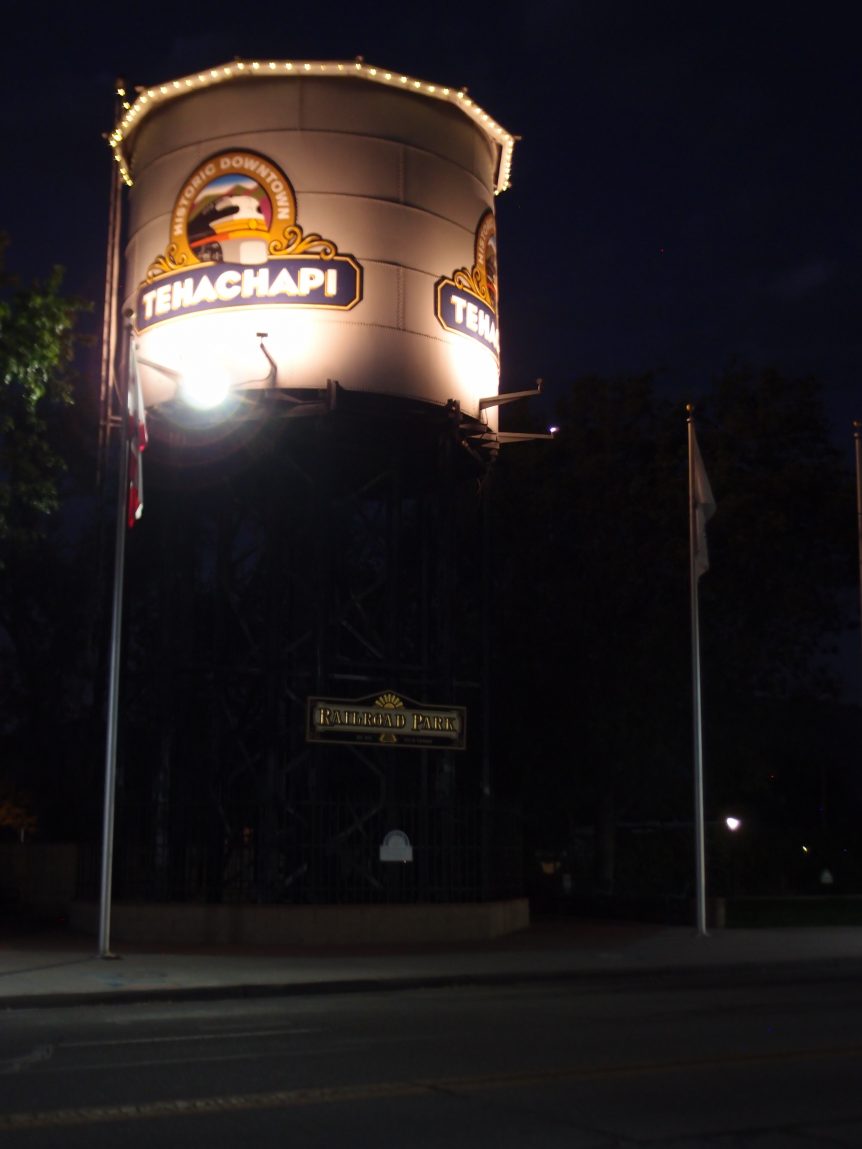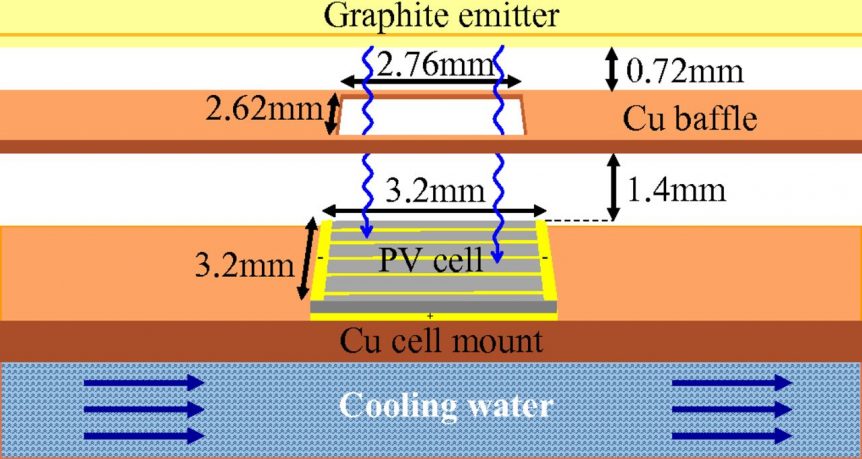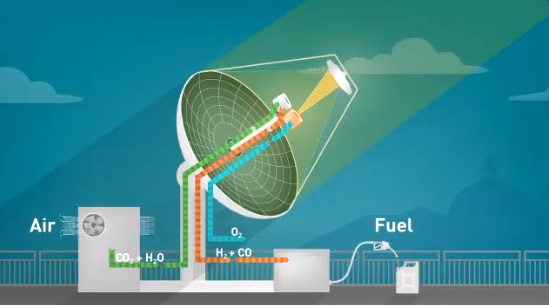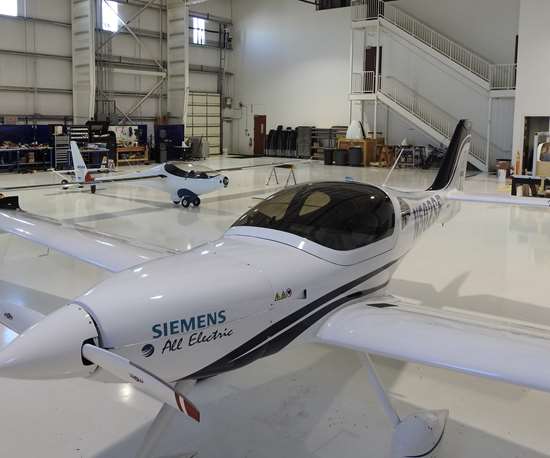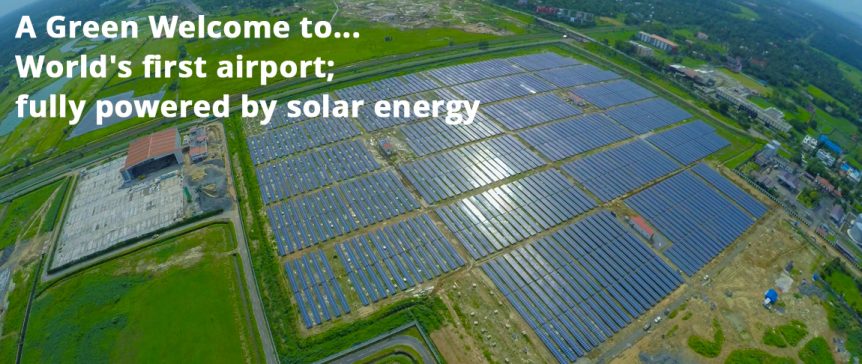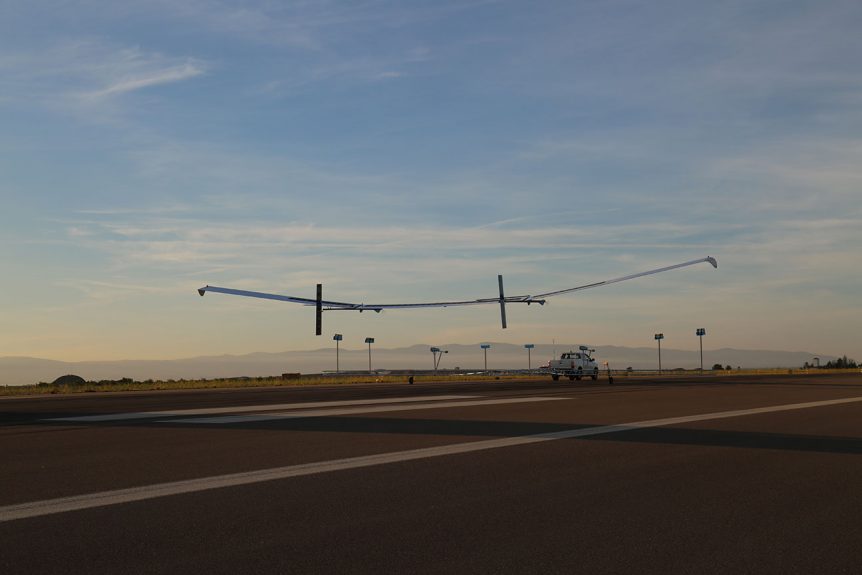A Glorious Calendar Eric and Irina Raymond, besides being skilled solar-powered airplane builders, designers, and pilots are also professional photographers. Their 2020 Solar Flight calendar highlights all those skills and provides historical background for their work. Besides that – it’s gorgeous. With a baker’s dozen stunning color photos, and historical black-and-white archival images on the back of each month’s offering, the calendar is a nice blend of modern artistry and the chronicle of an eventful past. Did you know, for instance, that Eric flew the first solar-powered aircraft across America in 1990 – 23 years before Solar Impulse’s journey? One episode on Eric’s blog is worthy of attention. “At my slow flying speed, I often flew in formation with flocks of birds. Nearing the Appalachian Mountains, I flew with the same three black birds two days in a row. They were still following me when I reached the highest part of the mountain range that I needed to cross. I …
The 2019 Personal Aircraft Design Academy (PADA) Trophy
Honoring John Langford If one stays with a line of work long enough, one will accomplish mighty things. That’s certainly true for John Langford, Chief Executive Officer for Aurora Flight Sciences. His decades-long career, start his decades-long career, starting at Massachusetts Institute of Technology and culminating his company partnering with Boeing, has explored almost every aeronautical discipline. For this perseverance, he was awarded the 2019 Personal Aircraft Design Academy (PADA) Trophy. Aurora Flight Sciences’ Chief Technology Officer, Tom Clancy, was on hand at the 2019 Sustainable Aviation Symposium at UC Berkeley to accept the award for Langford. Clancy has worked with Langford since their MIT days, building and flying several human-powered aircraft, including the 1974 Daedalus. That aircraft flew the 74 miles from Crete to Sicily over the Mediterranean Sea, still the human-powered distance record. He and Langford went on to design, build, and fly an astonishing range of aircraft. Putting solar cells on Daedalus gave them a pilotless airplane …
Technion Splits the Process and Splits Hydrogen Efficiently
Technion is an interdisciplinary technology institution based in Haifa, Israel. Two years ago, it began promoting its unique approach to splitting water to extract hydrogen. One of the researchers on the project won a three-minute thesis contest with her quick and eloquent explanation of photoelectric chemical water splitting, key to the research team’s approach. Point of Sale Delivery The Jerusalem Post reported, “Technion-Israel Institute of Technology researchers have developed a new method for the production of hydrogen from water that uses solar energy in a centralized way at the point of sale, such as a gasoline station for electric cars fueled by the gas.” (Editor’s italics) The article explained, “This eliminates the need for ‘solar farms’ whose hydrogen has to be trucked a long distance, making the process cost effective, safe and efficient.” Published two years ago in Nature Materials, the study was led by Avigail Landman, a doctoral student in the Nancy & Stephen Grand Technion Energy Program and …
Tehachapi Soars with New ideas – Day 2
The annual Experimental Soaring Association Western Workshop spills over the Labor Day weekend, starting with a welcome barbecue/potluck Friday evening and an official kickoff on Saturday. Sunday features more technical presentations and this year – an organization business meeting and a closing talk about moon shots. Pelicans, Albatross and Perpetual Flight Phillip Barnes, an accomplished aerodynamicist, photographer and expert on soaring birds, links all his interests and skills in his web site, How Flies the Albatross. This year, he brought his knowledge to bear on a design for a flying machine that would pull energy from the air it flies through to power its electric motors – Coulomb Keeper. He described the design process behind it in a talk titled, “Aircraft Energy Gain from an Atmosphere in Motion.” Keeper is an outgrowth of Phil’s earlier aircraft concept, Faraday. Both are derived from his desire to fly like the Albatross, which manages to circumnavigate the Antarctic Circle in seemingly perpetual flight. …
Berkeley Achieves New Highs in Thermophotovoltaic Efficiency
Researchers at University of California at Berkeley announced a record in thermophotovoltaic efficiency, now at 29 percent, but with a few tweaks, soon to be at 50 percent. This is great news for small drones, which could stay up for days, but possibly not a be-all, end-all for larger, more conventional electric aircraft. Let’s examine the potential and the pitfalls involved. The researchers’ “groundbreaking physical insight” and “novel design” applies thermophotovoltaic principles that are “an ultralight alternative power source.” Eli Yablonovitch, professor of electrical engineering and computer science (EECS), wrote in a paper published in the Proceedings of the National Academy of Sciences, ““Thermophotovoltaics are compact and extremely efficient for a wide range of applications, from those that require as little as 100 watts, [such as] a lightweight unmanned aerial vehicle, to 100 megawatts, [providing] electricity for 36,000 homes. In comparison, a 100-megawatt combined cycle power plant is massive,” Expanding on work he and his students published in 2011, Yablonovitch …
Recycling and Reusing Carbon in Jet Fuel
ETH Zurich (the Swiss Federal Institute of Technology), is recycling and reusing CO2 to make jet fuel as part of a carbon-neutral process. This is not a new idea, with others’ approaches to this detailed in earlier blog entries here, here, and here. Centered on a solar collector/reactor on the roof of ETH’s Machine Laboratory building in Zurich, researchers have “developed a novel technology that produces liquid hydrocarbon fuels exclusively from sunlight and air and have demonstrated the entire thermochemical process chain under real field conditions.” Extracting CO2 and water directly from ambient air through an adsorption/desorpton process, the system feeds these free materials into a solar reactor that is at the focus of the parabolic reflector that heats them to 1,500° Celsius. A cerium oxide structure in the reactor enables a redox (oxidation-reduction reaction)* cycle, with syngas an end product. This gas can be processed into a commercially-viable hydrocarbon fuel through conventional methanol or Fischer-Tropsch synthesis, according to GreenCarCongress. …
Phosphorene Nanoribbons may Enhance Batteries, Solar Cells
A great deal is made of how many great scientific discoveries are made by accident for everything from penicillin to Post-its®. With no fewer than ten authors for the Nature letter “Production of phosphorene nanoribbons,” their discovery hardly seems “accidental.” The letter, authored by Mitchell C. Watts, Loren Picco, Freddie S. Russell-Pavier, Patrick L. Cullen, Thomas S. Miller, Szymon P. Bartuś, Oliver D. Payton, Neal T. Skipper, Vasiliki Tileli and Christopher A. Howard, explains their happy “accident.” A Happy Accident “Nanoribbons, meanwhile, combine the flexibility and unidirectional properties of one-dimensional nanomaterials, the high surface area of 2D nanomaterials and the electron-confinement and edge effects of both. The structures of nanoribbons can thus lead to exceptional control over electronic band structure, the emergence of novel phenomena and unique architectures for applications.” The discoverers of phosphorene nanoribbons were trying to separate layers of phosphorus crystals into two-dimensional sheets, but they ended up with “tiny, tagliatelle-like ribbons one single atom thick and only 100 atoms of so across, but up to 100,000 …
Bye eFlyer Sales Near 300
Diane Simard, Director and Senior Vice President at Bye Aerospace, keeps your editor updated on happenings at the maker of what were SunFlyers, and which are now eFlyers. The rebranding makes sense. In their press release for the eFlight Expo in Friedrichshafen, Germany on April 11, the company included this explanation. “George E. Bye, Founder and CEO of Bye Aerospace, said eFlyer more accurately represents the aircraft’s high-tech all-electric propulsion system. ‘We originally thought solar cells would be standard on the airplane’s wings,’ Bye said. ‘However, with eFlyer’s primary markets being flight training and air taxi services, it makes more sense to make the price of the airplane as reasonable as possible.’” Bye Aerospace’s primary market is growing, with orders for 60 eFlyers from OSM Aviation , a training resource for many of the world’s airlines. This brings the total of eFlyers to almost 300, achieved despite some roadblocks. In an email to your editor, Bye explained, “In an April 11 email, …
A Solar Airport Profits from Vegetables
We’ve covered several airports that have found ways to make themselves environmentally friendly, including recycling the vast amounts of waste left by passengers, and installing solar panels to help run the site. Recently honored by the United Nations. “Cochin International Airport Limited (CIAL) has been selected for the Champion of Earth Prize – 2018, the highest environmental honor instituted by United Nations. CIAL is honored for its successful execution of one of the revolutionary ideas of using solar energy which made Cochin Airport a first in the world fully powered by it.” Besides generating 40 megawatts of electricity from its solar panels at 2018 levels, the airport grows organic vegetables beneath those panels. To ensure optimum land use, “CIAL has successfully implemented organic farming of vegetables in area[s] between solar panels. The airport stands at fourth in the country in terms of international traffic and seventh in total traffic has handled ten million passengers in 2017-18.” V.J.Kurian, Managing Director for CIAL, has an integrated …
Astigan HALE Flies British Skies
Ordnance Survey Established in 2014 by Ordnance Survey and private investors to develop and commercialize the UK’s first commercial sub-orbital Earth Observation High-Altitude Pseudo Satellites (HAPS), Astigan is both the aircraft company and product of that partnership with OS. Ordnance Survey produces maps for private, government and business users, including pre-printed print maps and custom charts downloadable to PCs or mobile devices. These can be as elaborate as items containing “fly-throughs” of requested routes for hiking, biking, driving or even flying trips. 3D modeling enables users to visualize the terrain and essential elements before committing to a flight. Astigan HALE To enable accurate mapping and application development, the team has created a 38-meter (124.7 feet) wingspan, twin-motor high-altitude, very light machine that will not only chart the landscape, but provide data for environmental, analysis of changes in the geospatial landscape, monitor agricultural factors such as soil erosion or crop yield, provide a communication link in remote areas and in disaster …

